The Impact of Deforestation on Central American Migration
By Anne Liu, Jeffrey Shen, Yun Shwe Eain
Image courtesy of Mongabay.
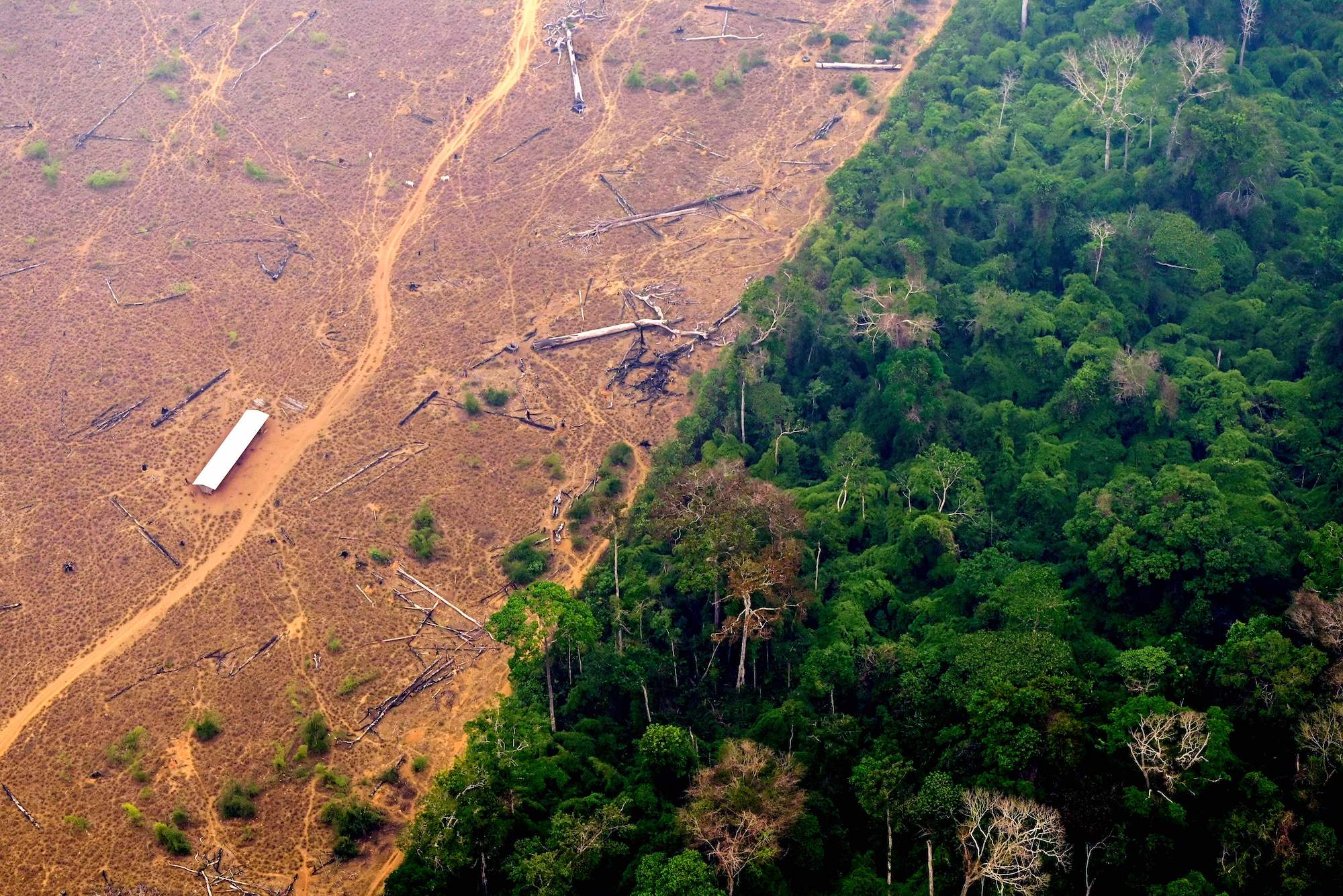
Douglas Magno/AFP/Getty Images
Introduction
Deforestation has led to increased Central American migration rates. In the past few decades, forestry coverage in El Salvador, Guatemala and Honduras has decreased drastically, which negatively impacted residents’ livelihood, food security and their susceptibility towards natural disasters, such as floods and droughts. Regions with severe deforestation coincide with regions with high migration rates, and as livelihood and food security are commonly ranked as top motivations for migration, people living in heavily deforested locations are also more likely to migrate due to natural disasters. As more people migrate or are displaced externally or internally to urban centers, regional governments are faced with enhanced pressure with rural migrants.
This data visualization was made with data contributed by the United Nations World Food Programme (WFP).
Forest cover data from Global Forest Watch.
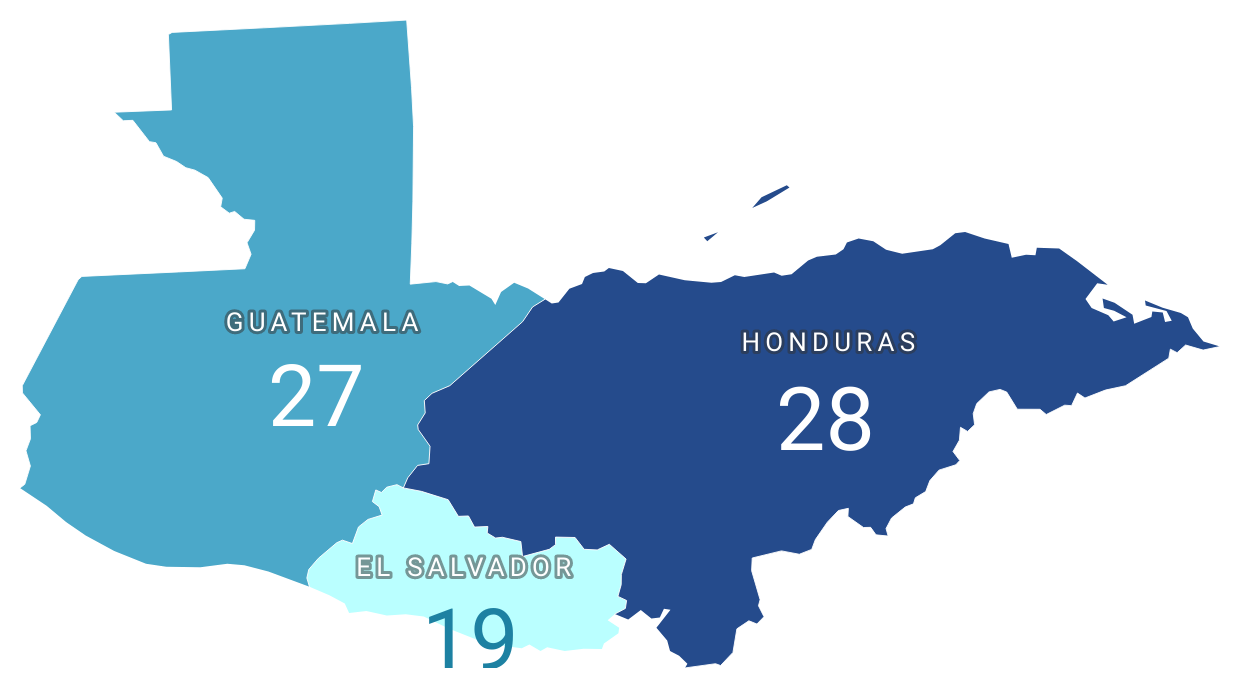
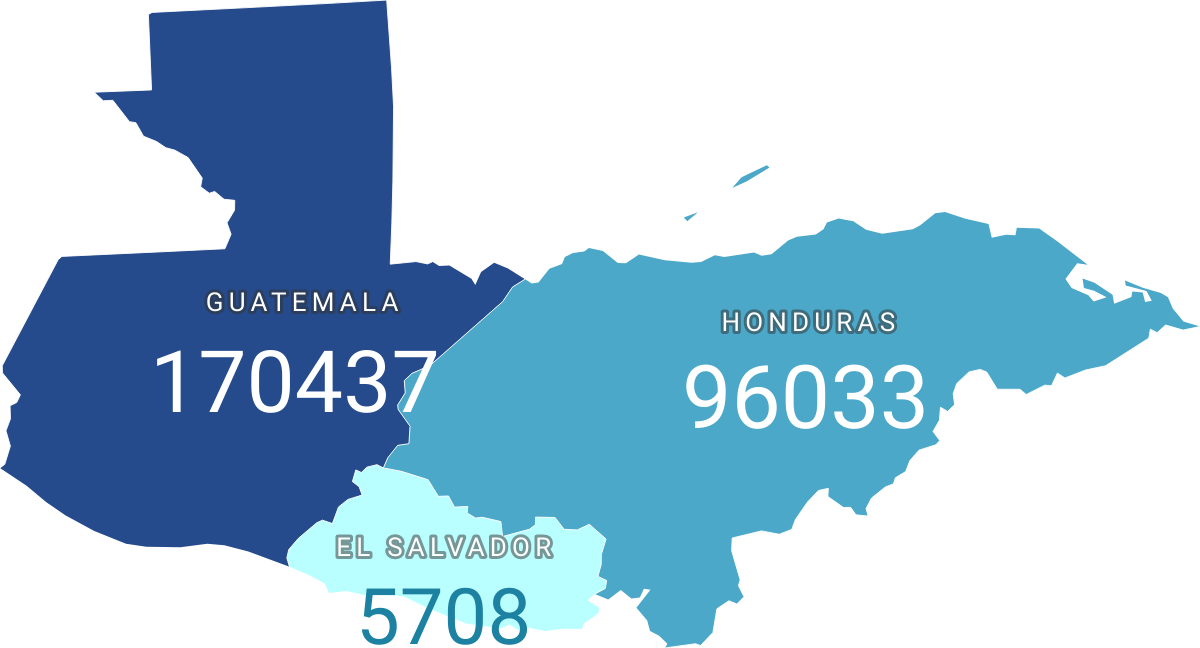
| Country | Department | Deforestation Rate | Food Insecurity |
|---|---|---|---|
| Guatemala | Alta Verapaz | 22.19% | 63.34% |
| Huehuetenango | 4.81% | 40.96% | |
| Chiquimula | 3.94% | 46.41% | |
| San Marcos | 3.56% | 37.37% | |
| Honduras | Choluteca | 3.57% | 52.07% |
| Cortés | 16.95% | 56.62% | |
| Francisco Morazán | 14.97% | 47.00% | |
| Yoro | 14.64% | 53.77% | |
| El Salvador | San Salvador | 2.89% | 54.70% |
| Ahuachapán | 3.82% | 70.80% | |
| Cabañas | 3.99% | 67.73% | |
| Usulután | 5.60% | 57.45% |
Reasons for External Migration
External migration is defined as leaving the home country for another country. Data from the World Food Program.
Reasons for Internal Migration
Internal migration is defined as relocating from one region in the home country to another region. Data from the World Food Program.
Deforestation & Food Security
Deforestation reduces the supply of clean drinking water and food for surrounding communities, which leads to food insecurity. According to studies, the highest concentrations of food insecure populations live in regions with tropical forests. Deforestation also destroys the biodiversity and fertility of the land, making it unsustainable to be a reliable food source for people nearby.
Deforestation and its link to loss of livelihoods
One quarter of the global population relies on forest for their livelihoods, including disadvantaged communities and indigenous communities. Deforestation in Guatemala, El Salvador, and Honduras can have significant impacts on the livelihoods of people who rely on forests for their well-being and threatens the local population’s livelihoods, incentivizing many of them to seek labor somewhere else.
Deforestation can directly cause loss of livelihoods due to impact on industries relying on the forests and indirectly through other consequences of deforestation such as soil erosion and climate change consequences.
Deforestation's direct link to loss of livelihoods
The loss of forests can have direct impacts on the availability of natural resources, such as timber and other forest products such as fruits, nuts, and medicinal products. These resources are critical for the livelihoods of people who rely on the sale of these products for their income and sustenance, and hence deforestation can directly impact the livelihoods of these people. Hover on the images below to learn more.
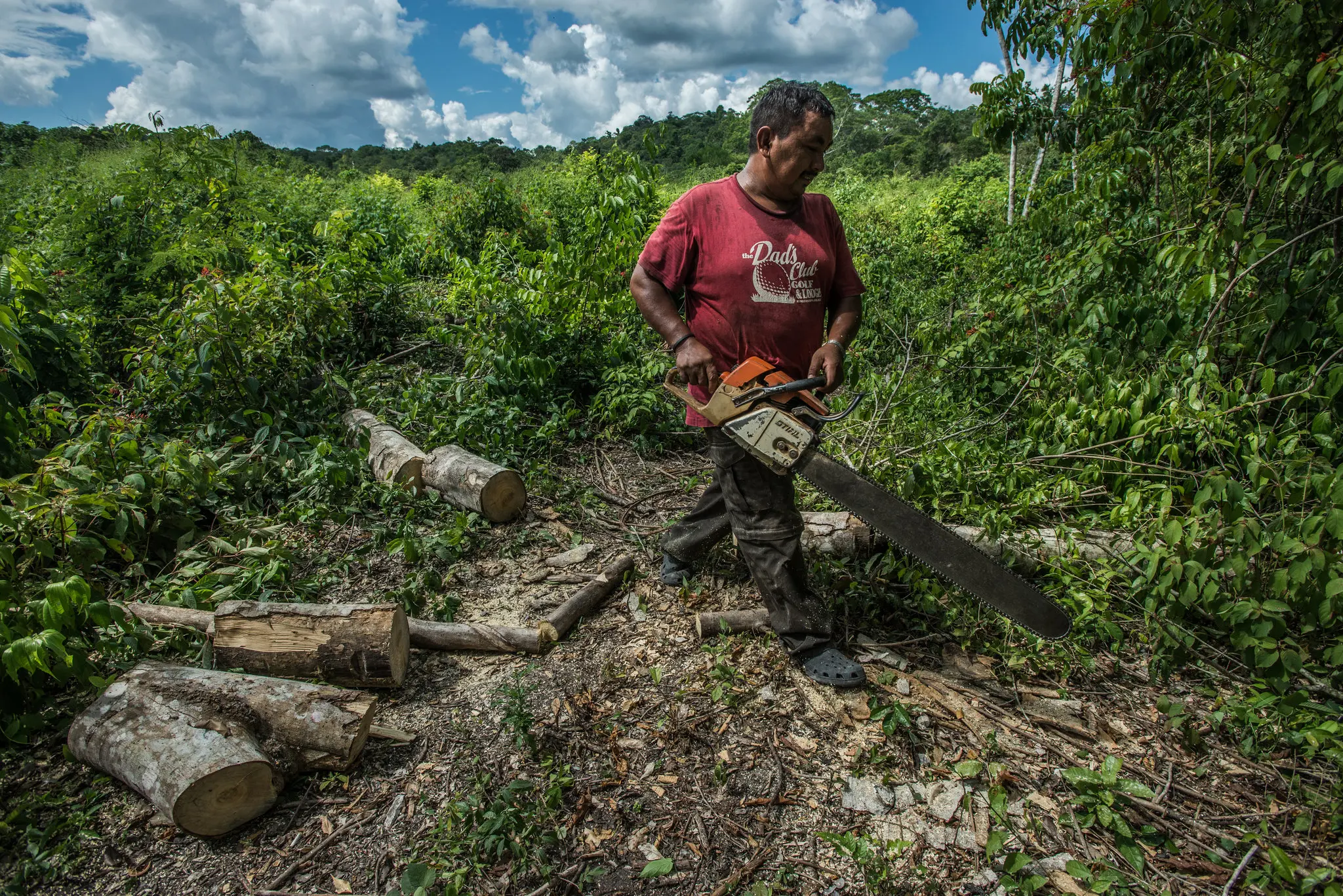
Timber harvesting
The forest industry is an important source of income and employment in these countries. However, illegal logging and deforestation together can lead to conflicts between logging companies and local communities over access to forest resources.
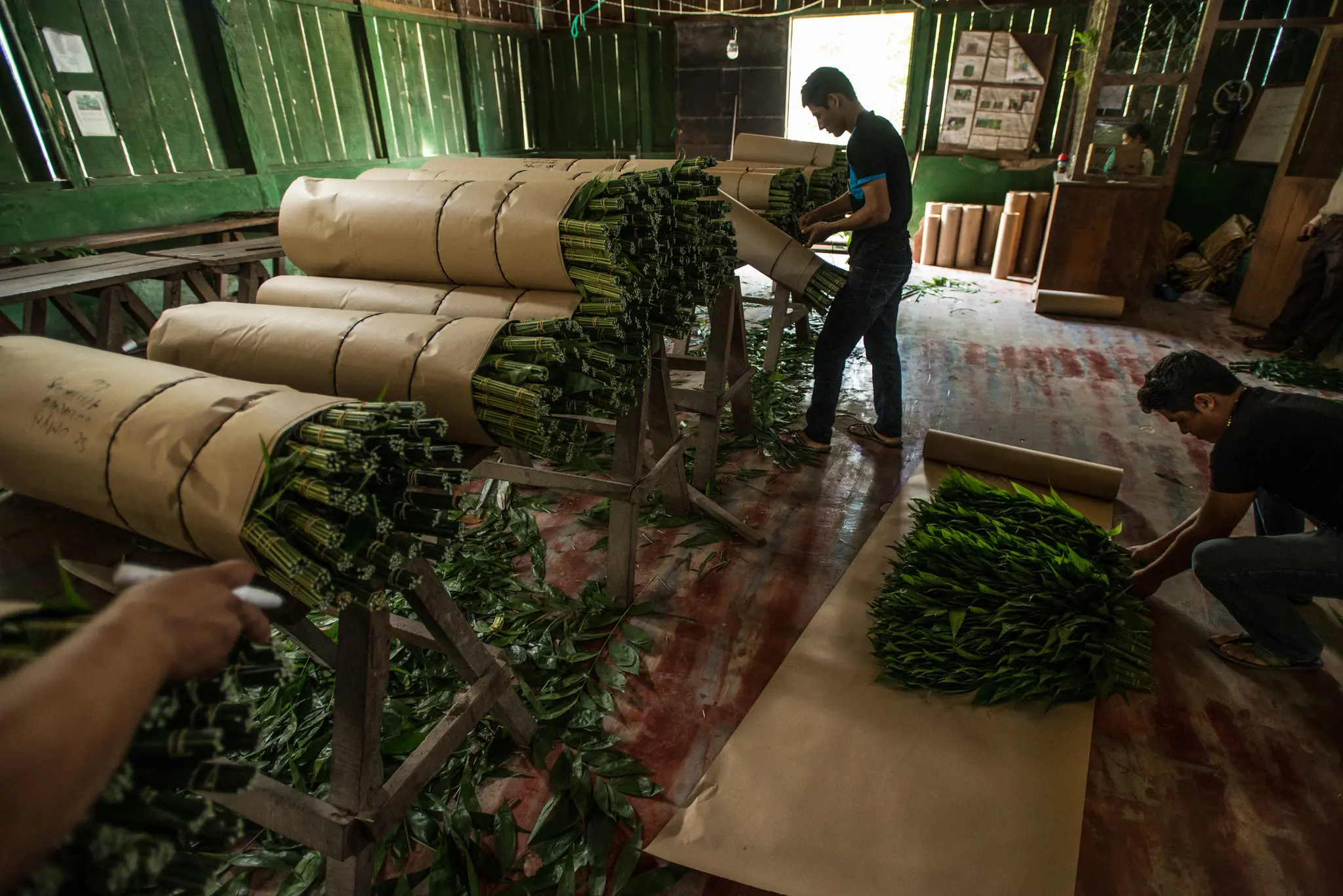
Non-timber forest products
Forests provide a range of non-timber forest products (NTFPs) that can be used for food, medicine, and other purposes. The photo shows xate, a palm leaf exported to the United States for flower arrangements, at a workshop in Uaxactún.

Ecotoursim
Forests are also an important attraction for ecotourism in these countries. When forests are degraded or destroyed, it can reduce the attractiveness of these areas for tourists, which can have negative impacts on the tourism industry

Deforestation's indirect link to loss of livelihoods through climate change
Deforestation is a significant source of greenhouse gas emissions, which contribute to global warming and climate change, which can in turn disrupt local weather patterns, leading to more frequent and severe natural disasters such as floods and droughts.
Climate change and the agriculture, forestry and fishing industries
The agriculture, forestry, and fishing industries in Guatemala, El Salvador, and Honduras provide income and food for millions of people in the region, but they are also highly vulnerable to the impacts of deforestation and climate change. Rising temperatures, changes in precipitation patterns, and more frequent extreme weather events such as floods and droughts are already affecting these industries, leading to crop failures, reduced yields, and damage to infrastructure.Deforestation and Flooding
Deforestation reduces the soil's ability to absorb and store water, leading to rapid runoff during heavy rains and increasing the risk of flooding. Trees also play a critical role in intercepting rainfall and reducing the impact of raindrops on the soil, and their removal can exacerbate soil compaction and reduce the water storage capacity in the landscape. The loss of trees also makes hillsides and slopes more vulnerable to erosion and landslides, leading to blockages in rivers and streams that increase the risk of flooding.Conclusion
As data demonstrates, deforestation in El Salvador, Guatemala and Honduras has led to increased migration rates. Consequences of deforestation, such as loss of livelihood, decreased food security, and more severe flooding and drought, has motivated many Central Americans to start a new life in urban centers or in another country. Millions of people have already migrated due to issues with food security, unemployment and natural disaster, and it is estimated that by 2050, there will be over 10 million Central Americans in urban centers. The status quo presents challenges to urban planners and policy makers. Increased migration could lead to heightened urban design pressure, and loss of workforce and residents in rural regions can further degrade local environments and ecosystems. Therefore, we propose the policy makers and international humanitarian investors to act accordingly: Encourage both domestic and international investment on forest preservation and climate change mitigation; Provide funds for climate adaptation for affected population, and help reconstruct the regions damaged by natural disasters; Have increased effort in ensuring employment and food security in regions vulnerable from deforestation; Adjust urban planning policies to reflect demands induced by future increase in urban population.